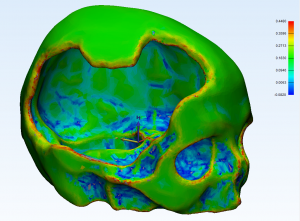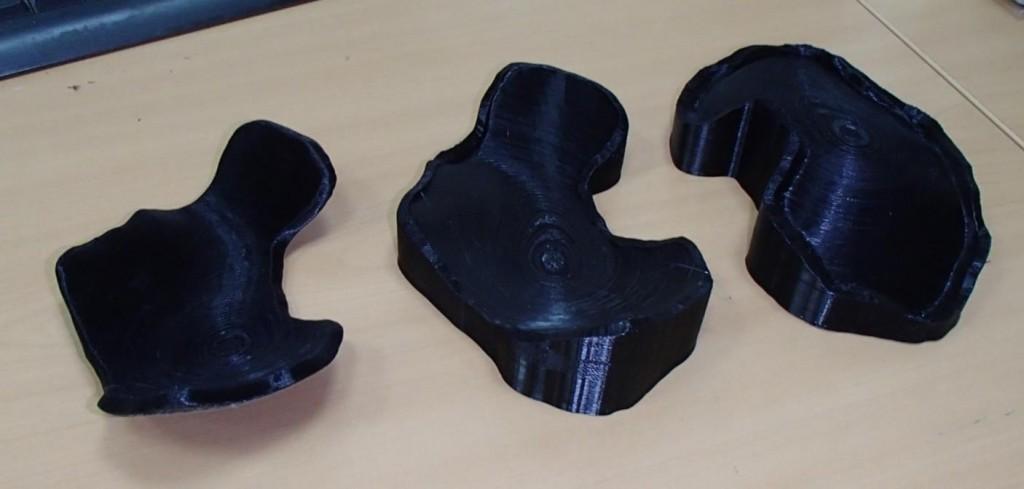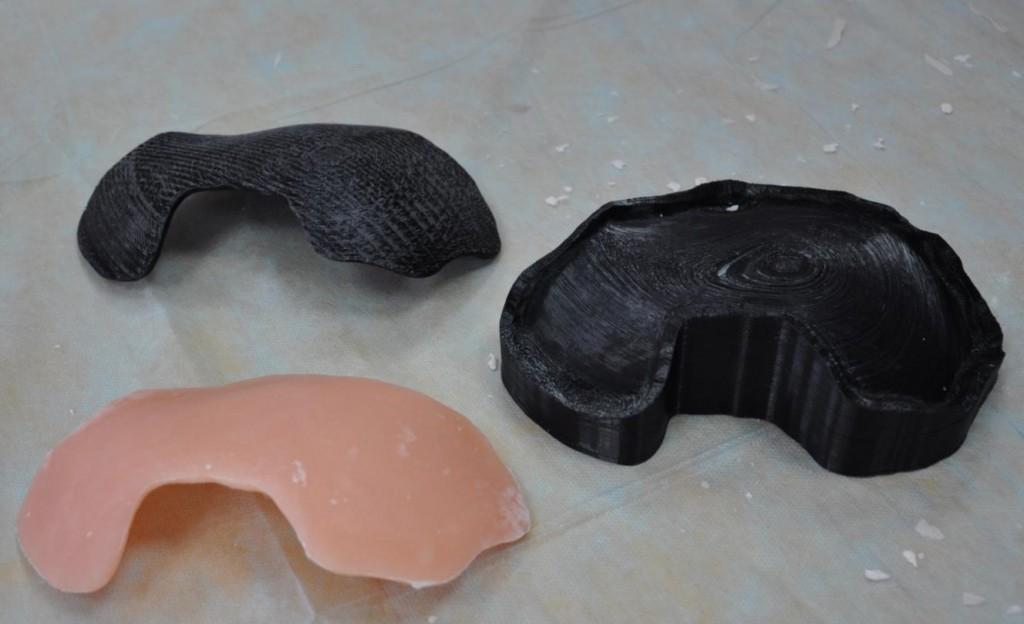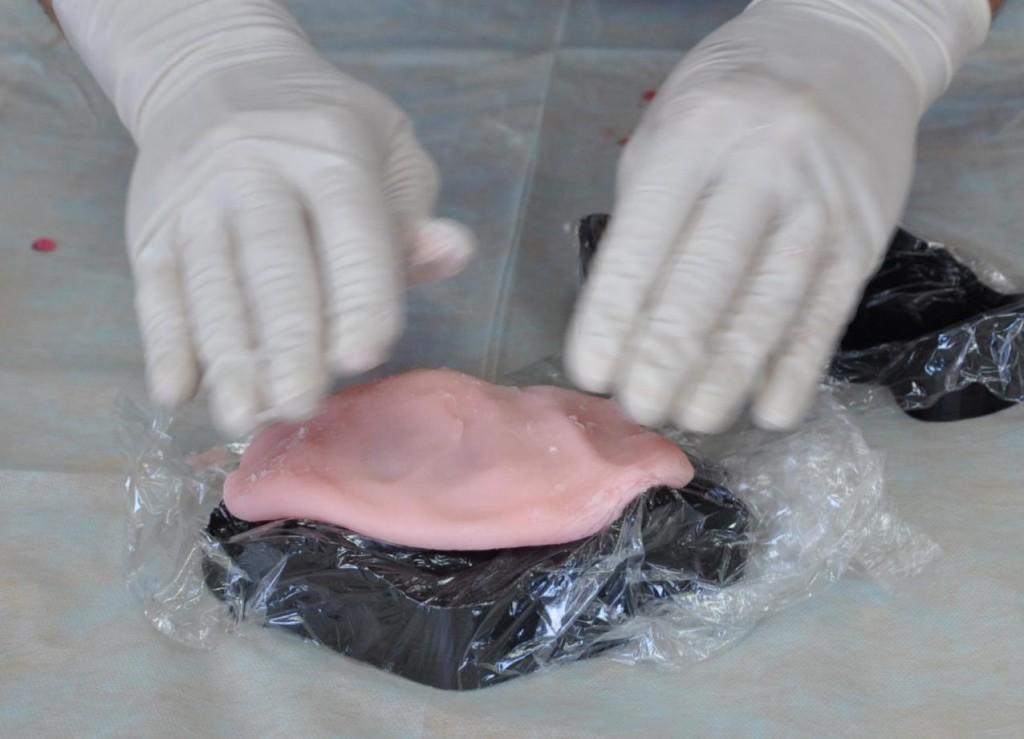Cranioplasty is the art and science of repairing defects or deformity in the skull. The reasons to perform this type of delicate surgery range from traumatic injuries to surgeries to birth defects.
Dr. Ivan Ulianovsky of the Vologda region in Russia was approached by neurosurgeons at the Vologda Regional Hospital for assistance in the creation of a mold for a cranial implant. The implant was required for a patient who had extensive defects in his skull as the result of a traumatic injury.
In many cases, the material of choice for implants for skull injuries is titanium. Titanium is a suitable material because of its strength, biocompatibility, and low rates of post-surgical infection. However, Dr. Ulianovsky was of the opinion that in an injury such as this one, resulting in the loss of such a large portion of the skull, that titanium would not be ideal because of its potential for deformation when covering such a large expanse. Instead, he wanted to use Protakril-M, a cold-cure acrylic powder that is often used in dental practice for the creation of dentures and orthodontic appliances, among other things.
 In order to use this material, he needed a highly accurate mold. This, unfortunately, required the services of a skilled sculptor and one was not available from the state hospital. Dr. Ulianovsky then turned to 3D printing as the method of choice for creating the mold. A CT scan of the patient’s head was taken with each ‘slice’ image produced at a distance of 1.25 mm from the last. This allowed for their assembly into a detailed three-dimensional model of the skull.
In order to use this material, he needed a highly accurate mold. This, unfortunately, required the services of a skilled sculptor and one was not available from the state hospital. Dr. Ulianovsky then turned to 3D printing as the method of choice for creating the mold. A CT scan of the patient’s head was taken with each ‘slice’ image produced at a distance of 1.25 mm from the last. This allowed for their assembly into a detailed three-dimensional model of the skull.
The model was created using the cleverly named marching cubes algorithm. This model, however, contained a number of defects that required attention, something not uncommon in this type of work. After further refinement, the model became usable for the creation of a mold that would fill in the missing piece of skull. The measurements for the missing piece were taken from the other half of the skull with the assumption that the skull should be largely symmetrical.
With the models in hand, so to speak, a physical model of the bone and the working halves of the mold were printed. Using the Protakril-M material in the mold not only allowed for a perfectly fitting implant but also allowed the surgeons to familiarize themselves with the piece well in advance of the surgery. The customization available through the process ensures excellent fit between patient and implant and the ability to study the injury and the preparations that can be undertaken prior to the surgery reduce the time on the operating table for the patient.
While there appears to still be some level of disagreement in the medical community regarding the suitability for titanium as a material for implants of this size, what everyone does agree on is the invaluable role played in these types of procedures by 3D modeling and 3D printing.
Are you familiar with similar uses of 3D printing for medical reconstructive procedures? Let us know what you think of this application in the 3D Printed Cranioplasty forum thread over at 3DPB.com.
Subscribe to Our Email Newsletter
Stay up-to-date on all the latest news from the 3D printing industry and receive information and offers from third party vendors.
You May Also Like
3D Printing News Briefs, April 13, 2024: Robotics, Orthotics, & Hypersonics
In 3D Printing News Briefs today, we’re focusing first on robotics, as Carnegie Mellon University’s new Robotics Innovation Center will house several community outreach programs, and Ugogo3D is now working...
Rail Giant Alstom Saves $15M with 3D Printing Automation Software 3D Spark
3D Spark has entered into a three-year deal with the rail giant Alstom. Alstom, a transport behemoth with annual revenues of $16 billion, specializes in the manufacture of trains, trams,...
Meltio Expands Global Reach with New Partnerships in the Americas and Europe
Spanish 3D printing manufacturer Meltio has expanded its sales network across the globe. With the addition of three new partners in the United States, Brazil, Argentina, and Italy, Meltio aims...
3D Printing Webinar and Event Roundup: April 7, 2024
Webinars and events in the 3D printing industry are picking back up this week! Sea-Air-Space is coming to Maryland, and SAE International is sponsoring a 3D Systems webinar about 3D...


































